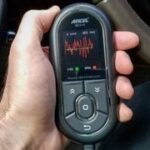A blown head gasket is a serious engine problem, but can an OBD2 scanner detect it? Not directly. An OBD2 scanner reads diagnostic trouble codes (DTCs) from a vehicle’s computer. These codes correspond to specific malfunctions detected by the car’s sensors. While a blown head gasket itself doesn’t trigger a specific code, it can cause issues that do.
A common symptom of a blown head gasket is coolant leaking into the cylinders. This can lead to misfires, which can trigger codes like P0300 (random misfire) or P0301-P0308 (cylinder-specific misfires). The OBD2 scanner will detect these misfires and report the corresponding codes. However, misfires can have various causes, so further diagnosis is necessary.
Another potential indicator is a rich or lean fuel mixture caused by coolant entering the exhaust system. This might trigger codes related to the oxygen sensors, such as P0171 (system too lean) or P0172 (system too rich). Again, these codes are not specific to a blown head gasket and require further investigation.
Overheating, a frequent consequence of a blown head gasket, can also indirectly lead to OBD2 codes. If the engine overheats significantly, it can damage various components, triggering corresponding DTCs.
While an OBD2 scanner can’t definitively diagnose a blown head gasket, it can provide valuable clues. Observing related codes like misfires, oxygen sensor issues, or overheating indicators can point towards a potential head gasket problem.
Other symptoms, such as white smoke from the exhaust (coolant burning in the cylinders), bubbling in the coolant reservoir, or a milky oil appearance (coolant mixing with oil), are stronger indicators of a blown head gasket.
A code like P0335, referring to a crankshaft position sensor malfunction, as mentioned in a related query, is unlikely to be directly caused by a blown head gasket. However, it’s crucial to address any DTC to ensure proper engine function.
In conclusion, while an OBD2 scanner cannot directly confirm a blown head gasket, it can provide crucial hints by detecting related problems. Combining OBD2 readings with a thorough visual inspection and other diagnostic tests is essential for accurate diagnosis and repair. If you suspect a blown head gasket, consult a qualified mechanic for a comprehensive inspection.
